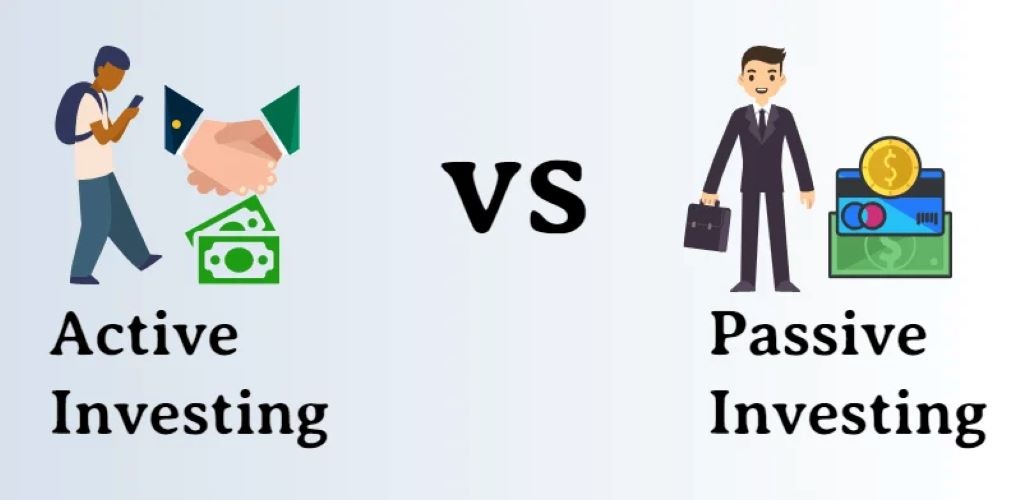Active vs Passive Investing: Why Retail Investors Keep Losing (and How to Win) : The dream of financial freedom, of watching your money grow and work for you, is a powerful motivator. For many, this dream is pursued through investing. But for a vast number of retail investors, the reality is a frustrating cycle of buying, selling, and often, losing. Why is it that so many individuals struggle to achieve their investment goals, especially when the market seems to offer so many opportunities? The answer often lies in a fundamental misunderstanding of investment strategies: active vs passive investing.
This article will demystify the world of active and passive investing, explain why many retail investors fall into common traps, and most importantly, provide you with actionable strategies to navigate the market more effectively and potentially win the investment game.
Defining the Players: What is a Retail Investor?
Before we dive into the strategies, let’s clarify who we’re talking about. Define retail investors, also known as individual investors, are non-professional investors who buy and sell securities or other assets for their own accounts, rather than for another company or organization. They are typically individuals who manage their own portfolios, often with the goal of growing their personal wealth for retirement, education, or other long-term objectives. Unlike institutional investors (like pension funds or hedge funds), retail investors usually operate with smaller amounts of capital.

The Two Titans: Active vs Passive Investing
At its core, investing boils down to two main approaches: active vs passive investing. Understanding the nuances between them is crucial for any retail investor.
Active Investing: The Quest for Alpha
Active investing is characterized by the belief that it’s possible to outperform the broader market or a specific benchmark index. Active fund managers (or individual investors) make decisions about what to buy, when to buy it, and when to sell it, based on research, market analysis, and economic forecasts.
Key characteristics of active investing:
- Frequent Trading: Active strategies often involve buying and selling securities more frequently in an attempt to capitalize on short-term market fluctuations or identify undervalued assets.
- Higher Fees: Because active management requires significant research, analysis, and often a larger team of professionals, the associated fees (expense ratios, trading costs) are typically higher.
- Goal: Outperformance: The primary objective is to generate returns that are higher than a comparable market index (like the S&P 500). This outperformance is often referred to as “alpha.”
- Examples: This includes actively managed mutual funds, hedge funds, and individual stock picking.
Passive Investing: The Power of the Index
Passive investing, on the other hand, takes a different philosophical approach. It’s based on the idea that consistently outperforming the market is incredibly difficult, especially over the long term, and that trying to do so often leads to underperformance due to fees and trading costs. Instead, passive investors aim to match the performance of a specific market index.
Key characteristics of passive investing:
- Buy and Hold: Passive strategies typically involve buying and holding a diversified portfolio of assets that mirror an index, with minimal trading.
- Lower Fees: Since there’s no active management or extensive research involved, passive investment vehicles like index funds and ETFs (Exchange Traded Funds) have significantly lower expense ratios and trading costs.
- Goal: Market Returns: The objective is to capture the overall returns of the market or a specific sector, accepting average market performance.
- Examples: This includes index funds, ETFs that track major indices (like the S&P 500, Nasdaq 100), and broad market bond funds.
- READ MORE : What is No Spend Challenge ? Your Ultimate Guide to Crushing the No Spend Challenge in 2025
Why Retail Investors Often Keep Losing: The Pitfalls of the Active Approach
While the allure of outperforming the market is tempting, many retail investors find themselves on the losing side, often due to their leaning towards active strategies without a full understanding of the risks and costs.
1. The Tyranny of Fees
Higher fees are a silent killer of investment returns. Actively managed funds, especially those promising to beat the market, come with higher expense ratios. These fees are deducted directly from your returns, year after year. Over decades, these seemingly small percentages can compound into substantial losses. For a retail investor, every dollar spent on fees is a dollar not working for them in the market.
2. The Difficulty of Consistent Outperformance
The stark reality is that most active fund managers fail to consistently beat their benchmark indices over the long term. Research repeatedly shows that after accounting for fees, a majority of active funds underperform passive index funds over a 5, 10, or 15-year period. This is a statistically significant challenge that even seasoned professionals struggle to overcome. The idea that an individual retail investor, with limited resources and time, can consistently pick winners is even more improbable.
3. Emotional Decision-Making
Retail investors are often susceptible to emotional biases that lead to poor investment decisions. Fear and greed can drive them to buy high during market exuberance and sell low during downturns. This “buy high, sell low” cycle is the antithesis of successful investing. Active trading, especially when driven by news headlines or market noise, exacerbates these emotional pitfalls.
4. The Illusion of Control and Expertise
Many retail investors believe they possess superior insight or that they can “time the market” by actively trading. They might follow hot stock tips, engage in day trading, or constantly try to predict market movements. This often leads to overtrading, increased transaction costs, and ultimately, poorer performance compared to a disciplined, long-term approach.
5. Misunderstanding Specialized Funds (Crypto Hedge Funds & Private Equity)
While sophisticated investment vehicles exist, they are often inaccessible or misunderstood by the average retail investor. For example, crypto hedge funds for retail investors are emerging, but they carry extreme volatility and risk, often with opaque strategies and high fees. Similarly, private equity retail investors are a growing segment, but these investments are typically illiquid, have high minimums, and carry significant risks not always understood by individuals. Without deep knowledge and risk tolerance, dabbling in these areas can be a fast track to losses.
How to Win: Embracing a Smarter Investment Strategy
The good news is that you don’t need to be a Wall Street guru to succeed. By understanding the principles of active vs passive investment management and avoiding common retail investor mistakes, you can significantly improve your chances of achieving your financial goals.
1. Embrace the Power of Passive Investing
For the vast majority of retail investors, a passive investment strategy is the most effective and efficient way to grow wealth over the long term.
- Low-Cost Index Funds and ETFs: Invest in broad-market index funds or ETFs that track major indices like the S&P 500, total stock market, or global markets. These vehicles offer instant diversification at a very low cost.
- Diversification: Index funds inherently provide diversification across hundreds or thousands of companies, reducing company-specific risk.
- Simplicity: It’s a straightforward approach that requires minimal time and effort. You set it and largely forget it, allowing your investments to grow with the market.
2. Adopt a Long-Term Perspective
Resist the urge to constantly check your portfolio or react to daily market fluctuations. Successful investing is a marathon, not a sprint.
- Focus on Your Goals: Keep your long-term financial goals in mind. This will help you stay disciplined during market volatility.
- Automate Your Investments: Set up automatic contributions from your bank account to your investment accounts. This dollar-cost averaging strategy ensures you buy more shares when prices are low and fewer when prices are high, smoothing out your purchase price.
3. Minimize Fees and Costs
Every dollar saved on fees is a dollar that stays invested and compounds.
- Choose Low-Expense Ratio Funds: Prioritize funds with very low expense ratios. For passive funds, this often means well below 0.20%.
- Be Wary of Trading Costs: Frequent trading incurs brokerage fees and can eat into your returns.
4. Understand Your Risk Tolerance
Before investing, honestly assess how much risk you are comfortable taking.
- Asset Allocation: Determine an appropriate asset allocation (mix of stocks, bonds, etc.) based on your age, goals, and risk tolerance. Younger investors with a longer time horizon can generally afford to take on more risk (higher allocation to stocks).
- Avoid Speculative Investments: Unless you have a very high-risk tolerance and deep understanding, steer clear of highly speculative assets or strategies that promise unrealistic returns.
5. Educate Yourself (But Don’t Overcomplicate)
While passive investing is simple, understanding basic investment principles is crucial. Learn about diversification, compounding, asset allocation, and the difference between various investment vehicles. However, avoid the trap of believing you can outsmart the market by becoming a day trader or a master stock picker overnight.
Conclusion: Winning is About Staying the Course
The financial world can seem complex, but the path to successful investing for retail investors is often clearer than many believe. The allure of active investing and the promise of beating the market are powerful, but the data consistently shows that for the majority, a disciplined, low-cost, passive approach to investing yields superior results over the long term.
By understanding the fundamental differences between active vs passive investing, recognizing the pitfalls that lead to losses (especially high fees and emotional trading), and committing to a long-term, diversified strategy, you can indeed win the investment game. It’s not about predicting the future or chasing hot tips; it’s about patiently letting the market work for you.
Ready to take control of your financial future? Start by researching low-cost index funds and ETFs and consider setting up an automated investment plan. Your future self will thank you
Follow us on








